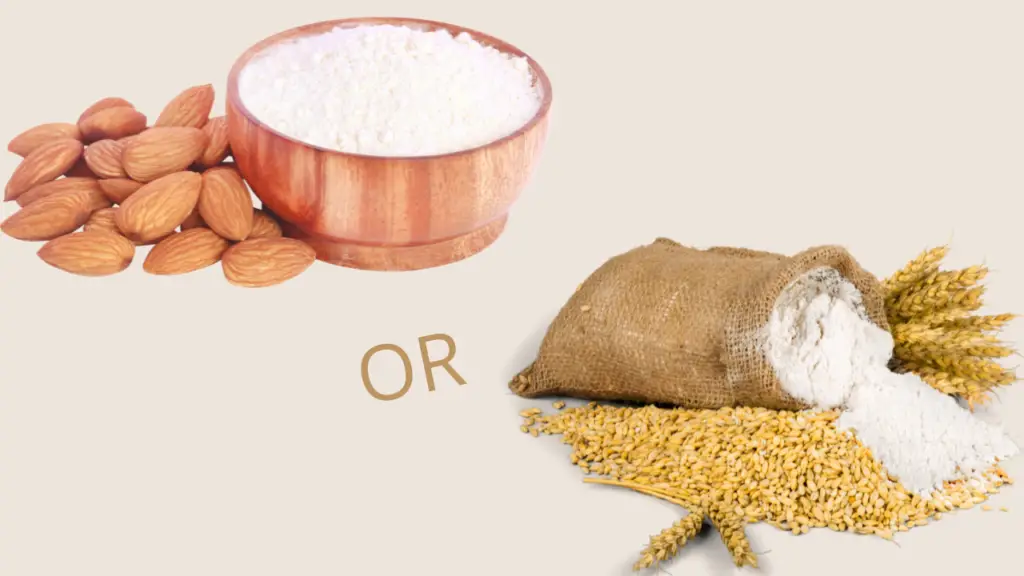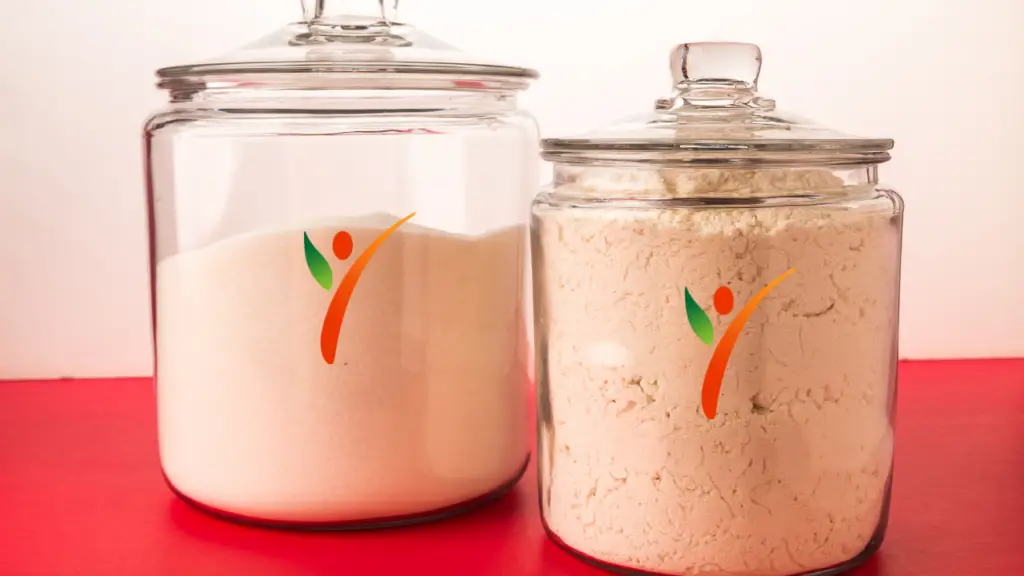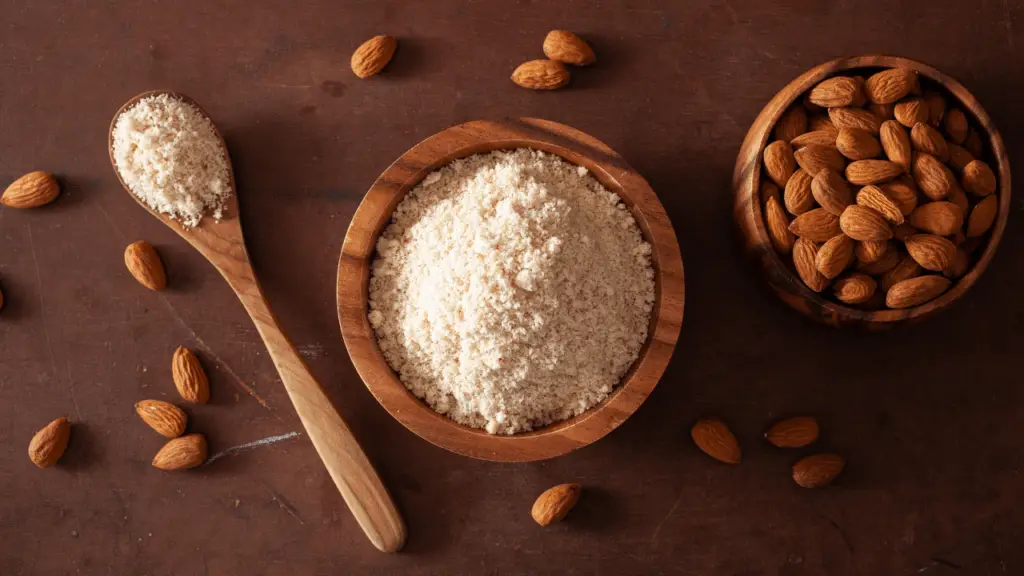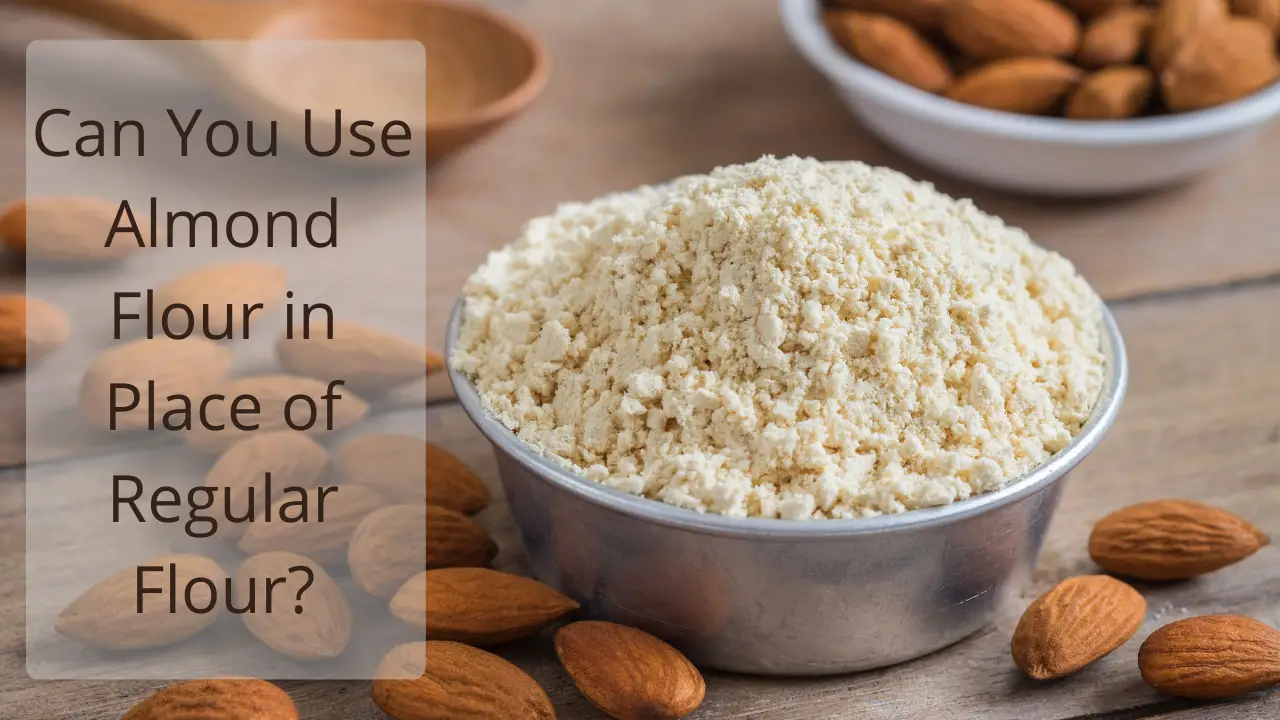Almond flour has gained a fair amount of fans in recent years. Every other person has had to switch to a diet for one reason or the other. And the thing is, almond flour suits almost everyone; flavor and diet preferences-wise!
Even food experts now suggest people switch to healthier alternatives than regular flour. Want to try that one recipe you've had your eyes on that uses almond flour? You should know the basics first.
What is Almond Flour?
Most people assume that almond meal and almond flour are the same ingredients. However, both differ because of their initial processing, which makes the end product differ as well.

When almonds are boiled, peeled, and ground, the resulting substance is almond flour. Meanwhile, almond meal forms when whole almonds are ground without peeling the skin first.
As a result, almond flour is more refined in texture and has a mild flavor than almond meals. Therefore, almond flour is usually the recommended ingredient for baking recipes that require fine consistency and balanced flavors.
Almond Flour VS. Regular Flour
While it looks simple, there are a bunch of differences between almond flour and regular flour. In other words, there's more than what meets the eye. You should know these differences when you're planning to bake with almond flour.
- Composition: When comparing the two, it's all about the source. Almond flour comes from almonds, as described above. On the other hand, regular flour comes in two forms- whole wheat flour and refined wheat flour. While refined wheat uses only the grain's endosperm, whole wheat flour uses all parts of the wheat grain. Similarly, refined flour, as the name suggests, is highly processed compared to wheat flour.
- Gluten Component: The critical difference, besides the source, between the two is gluten. Gluten originates from gluten-based grains, i.e., wheat, rye, barley, spelt, and triticale. Almond flour comes from nuts which are a plant-based source. Hence, while all types of wheat flour always contain gluten, almond flour is gluten-free. There are risks of cross-contamination in almond flour, but you can always go for the ones labeled gluten-free.

- Textures and Flavors: There's not much difference in the dry consistency of blanched almond flour and regular flour. They're both fine in texture and white or off-white. However, the dough of each flour performs differently. Dough made from wheat flour will be more stretchy and fluffy due to the gluten content. Almond flour dough is denser due to its high-fat content. As far as flavors go, wheat flour has no taste, but almond flour has a slight nuttiness.
- Substitution: There's no “one rule fits all” when it comes to substituting one flour for another. Generally, experts suggest that a 1:1 ratio to replace wheat flour for almond flour in baking recipes should work. However, actual recipes always tend to use about 25% lesser quantity when using almond flour instead.
- Nutritional Variation: When aiming for low-carb or high-fat foods in your daily diet, almond flour wins the race. It's much richer in good fats, but also calories. In return, this may cause a problem for those watching their blood sugar. But, studies conclude that almond flour is still better for your health than whole wheat flour in terms of nutritional value.
Health Benefits of Almond Flour
We've just shed light on almond flour being great for your health. In each serving of almond flour, you get an abundant amount of Vitamin E, magnesium, and several other nutrients. But you might be wondering how when it's high in calories and fats.
So, what can these nutrients do for your body? For starters, they help fight against chronic illnesses like Alzheimer's, diabetes, and cardiac problems. Vitamin E acts as an antioxidant that fights against free radicals, which are responsible for cancer.

The high-fat, low-carb content of almond flour provides healthy food intake and keeps you full for longer durations. Also, low-carb means no blood sugar spikes and energy crashes after a few hours. Research indicates that almond flour may also help in lowering blood pressure, cholesterol, and obesity.
For celiacs, gluten-sensitive, and wheat-allergic patients, almond flour is a solution for symptoms triggered by consuming wheat flour. Those who suffer from any of these conditions report a decrease in their symptoms after switching to almond flour.
Reasons You Should Use Almond Flour for Baking
First off, we've already discussed how almond flour is incredibly healthy for your body. So, you will want to add it to your diet solely for that purpose.
If you need more conditioning to convince you that almond flour belongs in your kitchen, here it is.

- The Taste- Almond flour, unlike other flours, has a very subtle nutty taste to it. Ultimately, while you might be able to recognize the flavor in your baked goods, some people love it! Even if you prefer a more neutral taste, almond flour is better than other alternatives.
- The Texture- Almond flour is refined, and after baking with it, you will be ready to leave wheat flour behind for good. Most substitutes have a coarse or dense texture to them which can ruin the results. Baked goods like cake and bread are best with a fine texture rather than a coarse texture. In this case, almond flour is the best option.
- The Recipe- Lastly, almond flour does not need a lot of liquid in the recipe with high-fat content. Other flours like coconut flour soak up more moisture and are dry once baked. Baked goods using almond flour are usually dense and moist and won't lose their moistness within a day.
How to Store Almond Flour?
Unfortunately, almond flour will not last the same time in the same conditions as regular flour. Regular flour is more resistant to heat and can typically last for longer than one year.
Meanwhile, because of the high-fat content of almond flour, you need to take care when storing and using it. Firstly, ensure you're sealing the packaging properly after opening it so no moisture can get inside.

Almond flour needs to be kept in a cool, dark place safe from sunlight and high temperatures. Typically, almond flour should last anywhere between 6 months to 1 year, depending on storage. For instance, if you're storing it in the refrigerator or freezer at cooler temperatures, it can last longer.
Which Diets Can You Eat Almond Flour On?
Almond flour among dieters is well-known, and for a good reason too. Almond flour goes with several diets, mainly because it's safe from several substances diets usually eliminate. Here are a few diets that go along with almond flour:
- Gluten-Free Diet: Once again, a recap- gluten is found in wheat, rye, barley, spelt, and triticale. Since almond flour is made exclusively from almonds and nothing else, it does not contain gluten. Thus, as a naturally gluten-free ingredient, it's safe for gluten-free dieters. Severe celiacs and gluten-sensitive patients can go for labeled or certified gluten-free brands.
- Grain-Free Diet: The term grains stand for actual grains from the Poaceae family. Almond flour comes from a plant-based source. Additionally, almonds are a seed instead of a grain. Consequently, almond flour is compatible with a grain-free diet as well.

- Vegan Diet: There's still an ongoing debate on manufacturers processing wheat flour using animal bone char. While there's no clarified proof that indicates this, it's better to be safe than sorry. Most vegan diet experts recommend using alternative options instead of wheat flour. Almond flour does not need any type of processing except for the removal of skin and grinding.
- Keto-Friendly Diet: A keto-friendly diet requires a regular meal plan with low-carb, high-fat foods. It's where almond flour is favorable to a keto-friendly diet because of its low-carb, high-fat nature. Dieticians also consider it healthy keto-friendly food, so it won't disrupt your diet or add unhealthy junk to it.
The Best Almond Flour Brands
Some options are better than others when exploring your local grocery store aisles for the best almond flour. It would help if you were looking at customer reviews on Amazon, the ingredients list, and nutritional value.
Combined elements will give you the overview to choose the almond flour that works for your needs. For instance, reviews will tell you whether a product has everything promising and works in baking recipes.

To make things easier, these are the brands that have made it to the list of 2021's best almond flours.
Gluten-Free and No Preservatives: Anthony's Goods Balanced Almond Flour
Gluten-Free and Keto-Friendly: Blue Diamonds Almonds Blanched Almond Flour
Premium Quality, Grain-Free, Gluten-Free and Certified Kosher: King Arthur Flour Blanched Almond Flour
Gluten-Free, No Additives, and Preservatives Certified Kosher: Wellbee's Blanched Almond Flour
USDA Certified Organic: Terrasoul Superfoods Blanched Almond Flour
Gluten-Free: Pillsbury Almond Flour
Tips for Baking with Almond Flour
Almond flour works well with baking recipes; that's a given. However, if you're planning to substitute almond flour in a recipe that uses regular flour, don't! Instead, search for recipes that use almond flour for those baked goods.
The thing is that almond flour, with its nutrient-dense nature, acts differently in recipes. It's moister and thicker, so you'll need a few tricks up your sleeve to guide you through the process.
- Get Your Measuring Cups: When it comes to almond flour, you can't work with estimates. Sure, almond flour is easier to work with compared with other flours as alternatives to wheat flour. However, you still need exact measurements if you're looking for the perfect consistency. Don't pack and press too much flour in the measuring cup. And don't forget to scoop off the excess.
- Start With Less: You might have heard the statement- less is more. It stands true when substituting almond flour for regular flour. Usually, you'll need a lesser amount of almond flour if you're trying to follow the traditional version. There are expected ratios, e.g., 1/3 cup almond flour per 1 cup regular flour for yeast-based doughs. However, this also depends on the brand you're buying. So it's best to look for the perfect consistency by gradually adding flour.

- Adding the Gluten Alternative: Where there is no gluten in almond flour to hold the dough together, you'll need a binding agent. Xanthan gum works best for this purpose. Meanwhile, other substitutes include guar gum, psyllium husk, ground flax seeds, and cornstarch. These non-gluten binders will provide stretchiness to the dough and make it rise.
- Baking and Setting: Again, almond flour does not fully act like regular flour, even during baking. Set your oven to a lower temperature than the temperature for a recipe with regular flour. Similarly, almond flour will bake quicker than regular flour due to being more moist and dense. The dense and moist properties also mean you will need to let your baked goods rest a little longer. Leave them for around 20 minutes in the pan to cool down; otherwise, they're prone to breaking.
Baking Recipes With Almond Flour
Are you planning to bake with almond flour? Numerous recipes will have your tastebuds explode at the idea of baking with almond flour. Start simple and slowly move on to more complex recipes once you get the hang of it. That way, you'll understand how almond flour works and get your desired consistency every time! Here are some recipes you should try:
- Almond Flour Cookies: They're the ideal recipe when switching to almond flour. Easy to bake, irresistible, mouthwatering, and you can always add chocolate chips to fulfill your chocolate cravings.
- Almond Flour Brownies: Who could ever say no to brownies? Fudgey, gooey, melt-in-your-mouth brownies can win over anyone, especially when they're healthy too.
- Almond Flour Apple Muffins: With a twist in the traditional muffins, these almond flour apple-based muffins are THE recipe for the fall season.
- Almond Flour Bread: Want some bread but don't want to disrupt your diet? Why not go for a nutritious, almond flour bread. You can eat it as it is or layer it with jams, jellies, peanut butter, or chocolate spread.
- Almond Flour Carrot Cake: Carrot cakes are a global favorite. Combined with that flavorful cream cheese topping, what more could you ask for with this healthier almond flour version?
- Almond Flour Berry Tart: Tarts are a little harder to achieve. But once you've mastered it, you'll be going back to this recipe again and again! You will create that crispy top without overbaking it.
Final Words
Almond flour is all things good, nutritious, gluten-free, and grain-free. It is easy to add it to your diet and substitute it for regular flour. It works just as well in baked goods; all you need is a little practice!
You may wish to watch your calories when using almond flour in your daily diet. But, you will enjoy the delicious taste you get when using almond flour.

Happy Baking!
The owner of this website, HealthYeahLife.com is a participant in the Amazon Services LLC Associates Program, an affiliate advertising program designed to provide a means for sites to earn advertising fees by advertising and linking HealthYeahLife.com Review to Amazon properties including, but not limited to, amazon.com.





